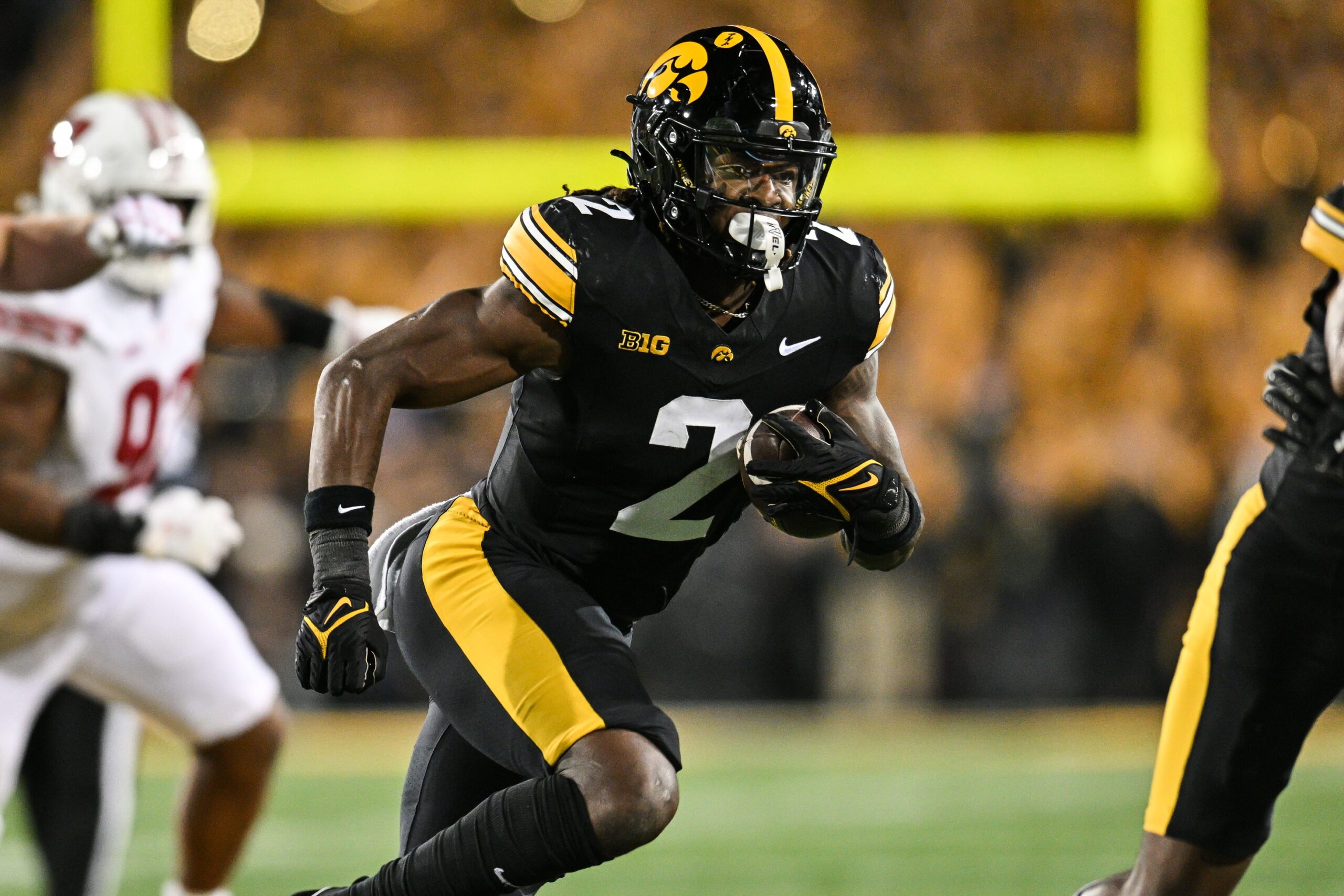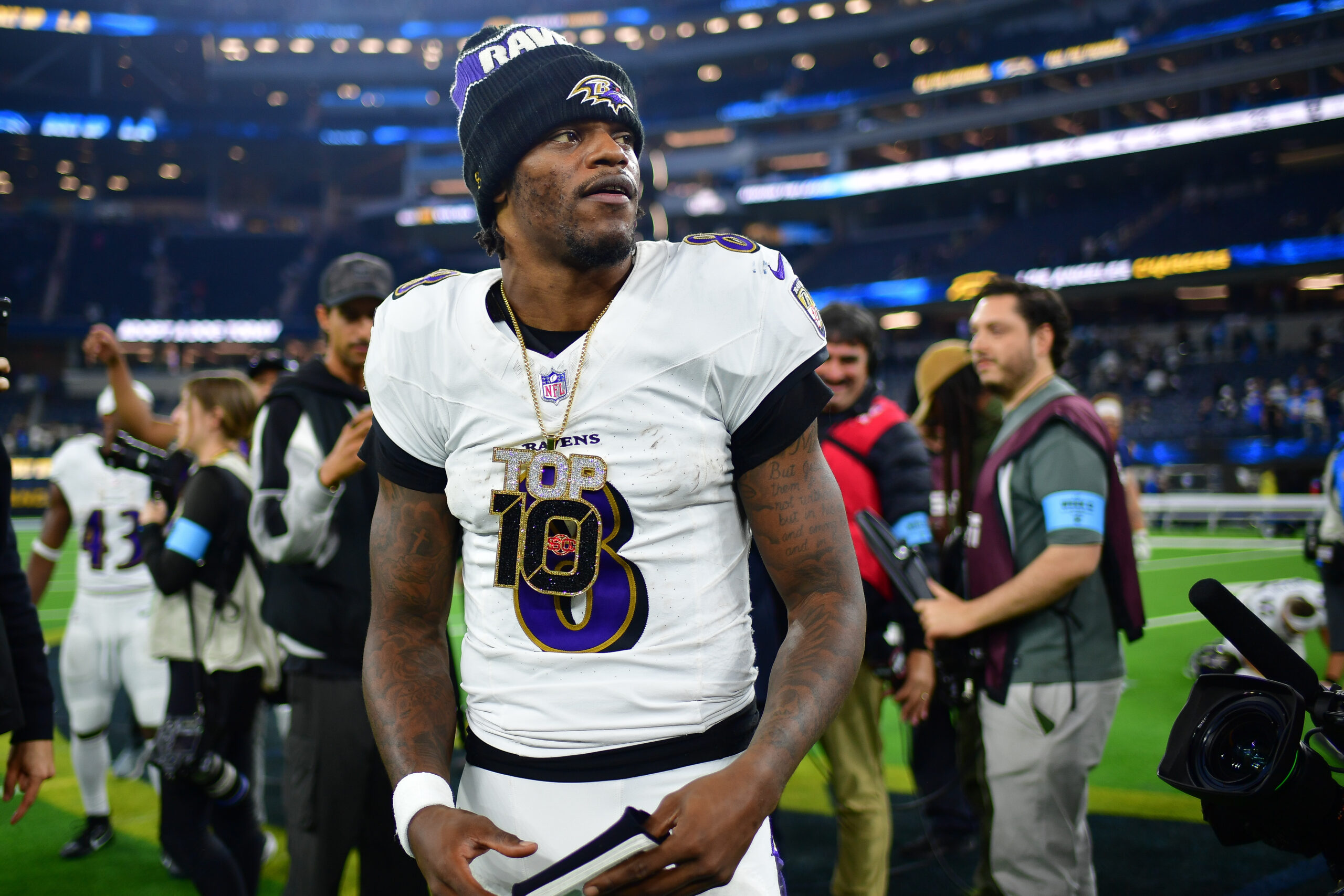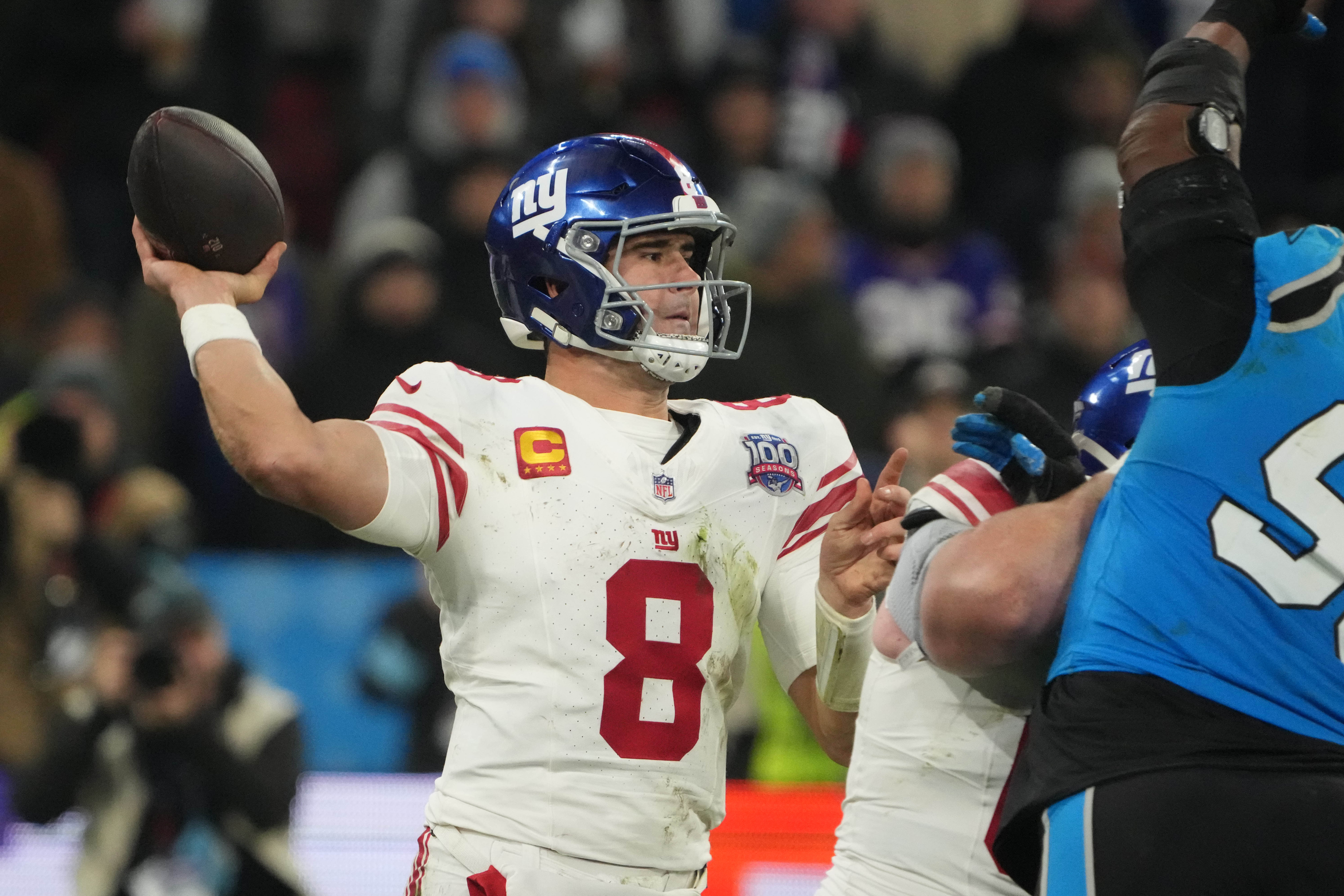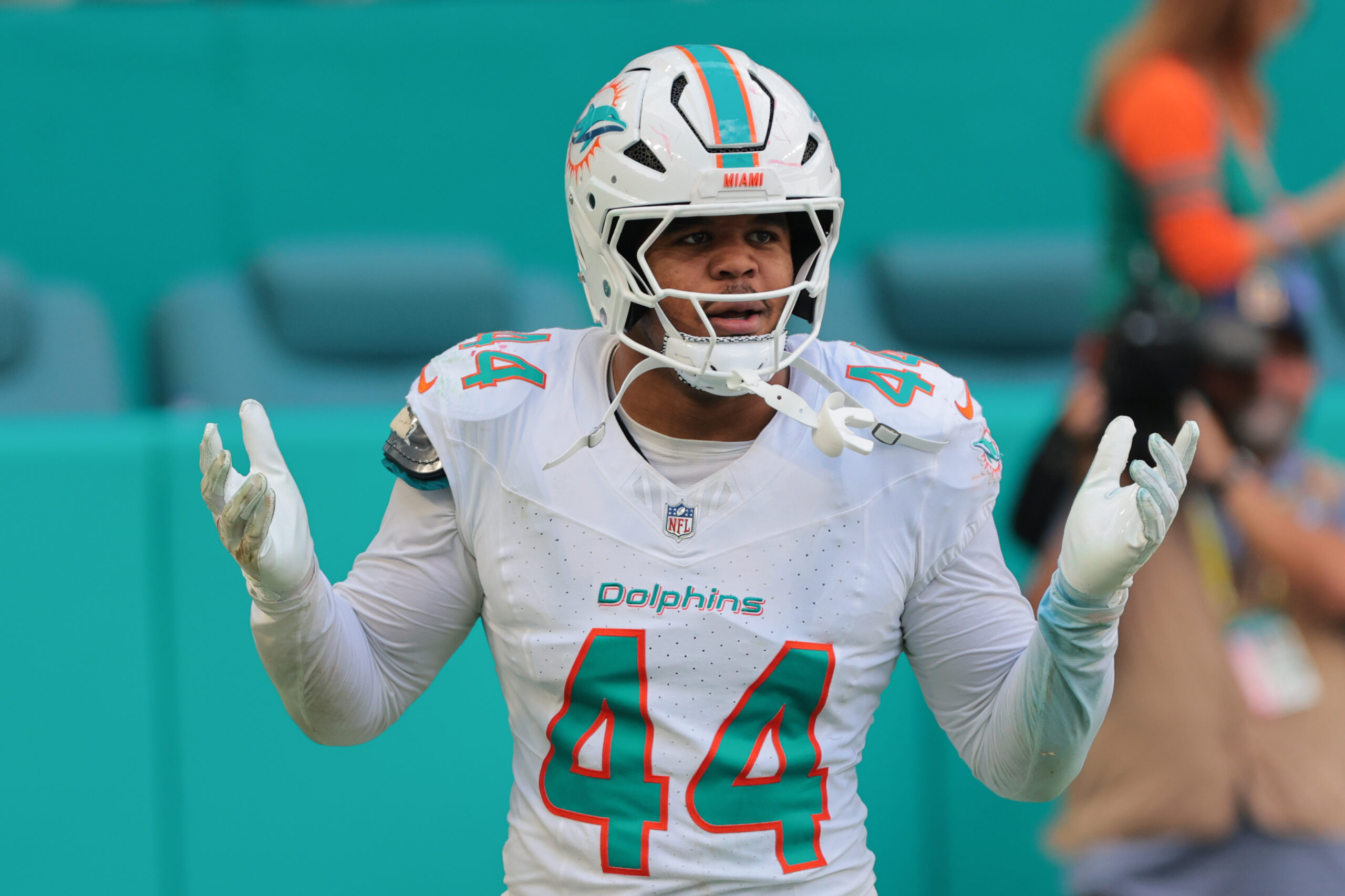NFL Analysis
10/30/24
10 min read
Will Anthony Richardson's Benching Change How Teams Scout Quarterbacks?

National media outlets, including this one, are piling on Indianapolis Colts QB Anthony Richardson. However, the issues that Richardson faces are more about the NFL's impatience with rushing inexperienced quarterbacks onto the field.
Richardson was criticized for subbing himself out of Sunday's game against the Houston Texans because he was tired. People around the league called out the second-year quarterback, and even his own center publicly held him accountable.
“We had a conversation about it,” Ryan Kelly told reporters. “I think he knows it’s not the standard that he needs to play up to or the rest of the team holds him to. I’ll kind of leave the conversation that we had at that, but I’m sure he’s going to take criticism for that, and rightfully so. That’s a tough look, but he’s also out there giving it all for his team.”
That decision to sub himself out might have factored into Shane Steichen's decision to bench the second-year quarterback for Joe Flacco ahead of the team's Sunday Night Football matchup against the Minnesota Vikings. Although, Steichen told reporters on Tuesday that it wasn't the sole reason for the benching.
#Colts HC Shane Steichen says Anthony Richardson knows he can’t tap out of a game, even for a play, but that’s NOT the reason he’s been benched for Joe Flacco. pic.twitter.com/3XkubTzWFW https://t.co/LEx5x0a72L
— Ari Meirov (@MySportsUpdate) October 30, 2024
The Colts indicated that Richardson will be benched for the rest of the 2024 season, which is a disappointing development for a player who came into the NFL with so much buzz as the fourth overall pick in the 2023 NFL Draft.
Richardson's struggles are just as much about the league's impatience with quarterback development as it is with the player himself.
How Richardson Got Here
Richardson dazzled during the pre-draft process, setting historic athletic testing numbers for a quarterback at the NFL Scouting Combine.
His 40.5-inch vertical jump and 10'9" broad jump were results that no quarterback had ever recorded, resulting in a perfect 10.0 Relative Athletic Score.
However, all of the buzz about Richardson's athletic ability overshadowed his biggest issue as an NFL-caliber quarterback, which was a severe lack of experience at the college level.
In three seasons at Florida, Richardson had just 455 dropbacks. It wasn't until his final season with the Gators that he saw significant experience as a starting quarterback, but even then, he still looked raw.
His entire play style was chucking the deep ball in 2022, posting an average depth of target of 11.5 yards with an adjusted completion percentage of only 64.3, according to Pro Football Focus.
That adjusted completion percentage ranked 141st out of 155 qualified quarterbacks in the FBS in 2022. It was clear that his throwing mechanics needed work and that he struggled to settle down on layup throws, missing reads, or overshooting his intended target.
Anthony Richardson missed the uncovered RB on the wheel route, never looked his way and instead overshoots Xavier Henderson in 1-on-1 coverage in the endzone.
— WBG84 (@WBG84) September 30, 2022
Was potentially a big-gain opportunity he missed. That area can be corrected with film-study and repetition. #NFLDraft pic.twitter.com/ucZRHY7RrM
Despite all of this, the Colts took Richardson with the fourth overall pick and made him the starting quarterback before Week 1 of his rookie season. There were flashes of potential in 2023, but Richardson's inexperience led to him taking unnecessary hits, leading to a concussion and then an eventual season-ending shoulder injury.
That lack of playing time hurt Richardson again this season, and he's still struggling with simple decision-making and accuracy. According to NFELO, he ranks last by a wide margin out of 44 qualified quarterbacks with a -14.6 completion percentage over expected. Spencer Rattler is the next closest with a -9 percent CPOE.
Richardson has one of the strongest arms in the NFL but struggles to throttle that strength down to complete easy throws like this one.
I will never give up on Anthony Richardson
— Josh Norris (@JoshNorris) September 23, 2024
ever
...but this is a ROUGH miss on the opening 3rd down in Week 3. 6'3" Alec Pierce can't even get an outstretched hand on it. pic.twitter.com/3WEd2mmbZL
All of this was supposed to improve with time and reps. However, Richardson's struggles staying healthy have hampered his ability to get the experience that he sorely needs. The Colts' offensive line hasn't done him many favors either, ranking 26th in pass block win rate, forcing him to consistently make these decisions while under duress.
The debate will continue about whether or not Richardson should have been benched. On one hand, Richardson still needs reps to continue developing and fixing his issues. On the other hand, the Colts are 4-4 and in the middle of a wild-card race that Joe Flacco could potentially keep them in if they want to compete right now.
It's a difficult decision for the Colts, but they're not the first team to struggle to develop a first-round quarterback.
Inexperienced Quarterbacks
NFL teams spend so much time evaluating quarterbacks ahead of the NFL Draft, but even the best scouting departments can fall in love with prospects despite their inexperience.
Just look at the San Francisco 49ers with Trey Lance.
The 49ers traded three first-round picks and a third-round selection to move up and take Lance in the 2021 NFL Draft. The North Dakota State quarterback had shined in his one season as a full-time starter, leading the Bison to a 16-0 record with 42 total touchdowns and zero interceptions while completing nearly 67 percent of his passes.
However, the COVID-19 pandemic led Lance to opt out of the 2021 NDSU season after just one game to prepare for the NFL Draft.
Like Richardson, Lance had significantly fewer snaps under his belt as a college quarterback. He had just 371 college dropbacks in his career, and he only played at an FCS program in North Dakota State instead of a prestigious SEC program like Florida.
Lance even got to sit the majority of his rookie season behind an established veteran in Jimmy Garoppolo. He was named the starter heading into his second year but suffered a season-ending ankle injury, leading to the emergence of Brock Purdy.
Since then, the former No. 3 pick hasn't gotten another chance to prove himself. He's attempted just 102 passes in his NFL career and made just four career starts. He's now the backup to Dak Prescott in Dallas, and it's unclear when he'll get another chance to get in-game experience.
Mitch Trubisky was another example of an inexperienced college quarterback going high in the draft. While he didn't have the athletic ability of Lance or Richardson, scouts were impressed with his one season as a starter for North Carolina, where he threw for 30 touchdowns and just six interceptions.
Like the other two, Trubisky had limited college experience, with 621 career dropbacks. The Chicago Bears took him No. 2 overall and immediately named him the starter despite his significant experience as a starting quarterback at any level beyond high school.
Although he showed flashes with the Bears, Trubisky struggled to take care of the ball. In those four seasons as the Bears starter, he played in 51 games with 37 interceptions and 27 fumbles, 10 of which resulted in turnovers.
#Bears-#Packers: End zone angle on the Trubisky INT. Eyes are locked-in on the corner route. That puts S Adrian Amos in a position to break on the ball & overlap the route. @NFLMatchup pic.twitter.com/Ey9a06VMTH
— Matt Bowen (@MattBowen41) September 6, 2019
Trubisky was eventually replaced in Chicago and has spent the rest of his career as a respectable backup quarterback in Pittsburgh and Buffalo.
Inexperience has hurt so many quarterbacks in the past, but that could be changing.
The NIL Era
Organizations may hurt quarterbacks and their development, but the pressure of inexperienced college quarterbacks to go pro and get paid has played a big role in top prospects rushing themselves out of crucial playing experience.
Fortunately, the NIL era could change that.
The financial incentive for quarterbacks to go pro is diminishing, thanks to reported seven-figure NIL deals in college football. According to On3, quarterbacks Jalen Milroe, Cam Ward, and Shedeur Sanders have NIL valuations of more than $2 million for the 2024 season.
In addition to staying in college and still getting paid, top quarterbacks can continue to work on their games and elevate their draft stock. LSU Tigers QB Garrett Nussmeier is one of those players who could benefit from this current era of college football.
Nussmeier has led the Tigers to a 6-2 record in his first year as the full-time starter at LSU. He patiently waited his turn behind Jayden Daniels but is now flashing in 2024 with 2,627 passing yards, 20 touchdowns, and nine interceptions.
Garrett Nussmeier in a 2 minute drive before the half against Ole Miss.
— Nate Tice (@Nate_Tice) October 30, 2024
Can really see his aggressiveness, ball placement, feel for pressure in the pocket, and how he tries to throw teammates open. pic.twitter.com/LAhKW8266P
Things are going so well for Nussmeier that he's starting to generate buzz as a potential first-round pick. However, he has fewer than 600 career dropbacks at the college level, and that inexperience could hurt him once he reaches the NFL level.
Instead of competing for positioning among the other first-round quarterback prospects this year, Nussmeier could return to LSU for his senior season to continue working on his game and compete for the QB1 spot in the 2026 NFL Draft.
The variables in deciding to go pro have changed in the NIL era, and it could lead to fewer inexperienced quarterbacks going pro and struggling to find their footing due to a lack of reps.
What's the Path Going Forward?
If the NIL era keeps quarterbacks in college for an extra year or two, the debate about starting vs. sitting rookie quarterbacks won't go away.
The Green Bay Packers consistently come up in this conversation for sitting young quarterbacks behind established stars to help them develop. Patrick Mahomes also sat his rookie year behind Alex Smith before taking the league by storm.
However, most franchises and coaching staffs don't have the luxury of competing with a veteran quarterback while drafting a rookie. Typically, the teams drafting a young quarterback are banking on that rookie to save their jobs by performing right away, with no established veteran quarterback on the roster to mentor them.
Jayden Daniels and Caleb Williams are two examples of those situations, and yet both are thriving as rookie starters. It helps that the two had more than 3,000 career dropbacks in college to learn from, along with success as a pair of Heisman Trophy winners.
The hope is that inexperienced young quarterbacks coming into the league will be given patience to develop at the NFL level. Unfortunately, the reality is that there is too much pressure for these quarterbacks to play right away and owners who have too much power in rushing their prized assets onto the field.
There's no set path to developing a quarterback into a star, and it's something that should be handled on a case-by-case basis. However, the harsh reality of the league is that there are too many jobs and reputations on the line to keep a long-term view of what's best for each quarterback.








